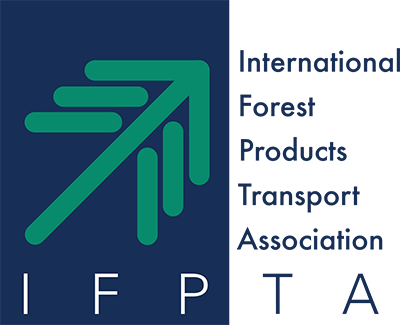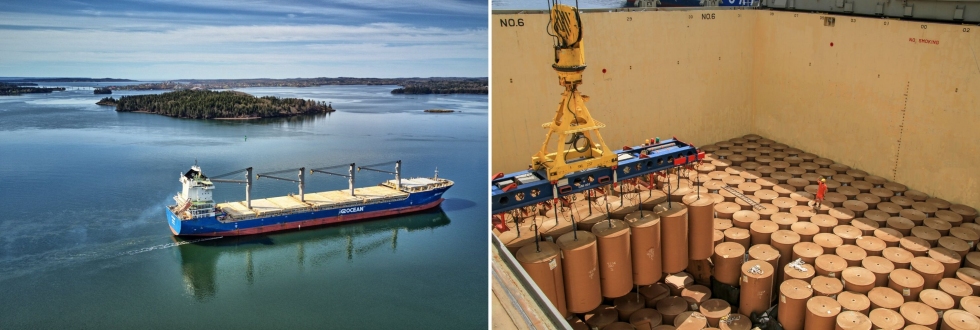|
G2 Ocean Expands Use of e-BillsThis article was written by Keith Wallis, Special Correspondent to JOC and is also available on G2 Ocean's website June 3, 2020 - G2 Ocean, the Norway-based project cargo and breakbulk operator, is expanding its use of electronic bills of lading (e-bills) amid growing interest from tech-savvy customers, even as rivals are taking a more guarded approach. The global COVID-19 pandemic is spurring a transition to digitized documents. Work-at-home regimes mean people have limited access to printers, couriers, and customs offices, making it challenging to produce and distribute shipping documents, especially negotiable bills of lading, Jonathan Harcourt, G2 Ocean’s director of innovation, told JOC.com. “These issues are all contributing to the shift to digitization,” he said. In countries such as India, blanket lockdowns have disrupted courier services and delayed deliveries of crucial documents. Many countries would like to fast-track the use and acceptance of e-bills and letters of credit to circumvent these problems, according to specialized blockchain platform provider CargoX, G2 Ocean’s blockchain partner. Fracht, a Swiss-based project forwarder, also uses the CargoX platform. Leif Arne Strømmen, G2 Ocean’s vice president for innovation and project cargo, said the coronavirus disease 2019 (COVID-19) has accelerated a wider move to digitization that was already under way. “After CargoX was approved by the P&I clubs, and also as a result of COVID-19, we have seen an increased number of requests from customers who want to learn more about the blockchain based e-bill and how they potentially can implement this in order to digitalize the bill of lading process,” Strømmen told JOC.com. G2 Ocean is currently only using the digitized bills of lading on a trial basis and in select trades, including those connecting Asia with South America, Europe, and Australia. “We have gradually extended e-bills to cover new trade lanes and destinations after going live with the first customer in a pilot trial in the second quarter of 2019,” Harcourt said. The trial involved G2 Ocean customer Manuchar, a Dutch trading and distribution company, whose trading activities include steel, metals, paper, and wood. “The platform gives customers full visibility over who has the original e-bill in their custody at all times. Other benefits include the elimination of courier-related expenses for paper documents and the speed it takes to distribute digital documents between those involved in the supply chain,” Strømmen said. The digital exchange of documents between Norway and Singapore takes just minutes, compared with several days to courier the paper equivalents, he said. On the platformVjeran Ortynski, chief business development officer at CargoX, told JOC.com the company’s e-bill platform has about 3,000 registered users, including shipping lines, freight forwarders, and shippers. “The feedback we are getting is that shipping lines would love to digitize but, given the state of the global economy due to the virus pandemic, just staying alive is their number one priority. But the industry does have to look at different ways of doing things,” Ortynski said. CargoX is developing a proof of concept for the Indian government, he said. In India, strict lockdown conditions — now beginning to ease — have strangled the traditional bill of lading (BOL) procedure, where paper BOLs, invoices, payments and delivery orders all have to be handled in person. The lockdown created bottlenecks, clogged India’s largest ports with cargo, and led India’s shipping ministry to urge the commerce ministry to fast-track digital solutions, he said. Ruedi Reisdorf, Fracht’s chief executive officer, told JOC.com that CargoX was the best solution they’ve found for bills of lading on blockchain. “The benefits are huge — no bill of lading can ever go missing, the transfer can be made within minutes, it is always known who currently has the B/L [bill of lading], and you save three-to-six times the courier costs,” Reisdorf said. He supports CargoX’s open platform because, while it can also be used by competitors, “with proprietary systems you are bound to one carrier and it dictates the terms,” he said. However, patchy adoption of technology and standards for the use of e-bills across the supply chain are impediments to their adoption. While customs authorities have been largely enthusiastic supporters, banks are more conservative in their approach, G2 Ocean’s Strømmen said. “While we see more interest in e-bills from our customers, it is still time consuming to implement due to the large number of parties involved in the supply chain,” he said. “These include customers of our customer, banks, customs agents, terminal operators, ship agents, etc., who are all used to an original paper-based bill of lading in their hands with a lot of ink-based stamps and signatures. It takes a lot of time and effort to explain to these same parties the meaning of ‘an original digital bill of lading,’ and the fact that this document is much safer than any original paper bill of lading that today can be faked without any problem.” As a result of these issues, while Fracht’s Reisdorf said digitized bills work well, he estimates that only 50 to 100 trial shipments have been made around the world using them. Strømmen said he expected it to take between five and 10 years for digitized bills of lading to take over from traditional paper bills. “I think it will be a slow birth, but then we will see exponential growth in e-bills,” he said.
Is demand there?Singapore-headquartered multipurpose/heavy-lift (MPV/HL) ship operator AAL is among those that have looked at digitized bills of lading, but see little customer demand. Frank Mueller, general manager of AAL Australia, told JOC.com the carrier has explored various providers of e-bill technology but has not seen sufficient demand from customers to justify the time or resources needed for implementation. “We do not necessarily see any technical advantages, except that in theory e-bills are a lot faster than posting original bills and having the paper bills move through letter-of-credit processes,” he said. This might be important when a very fast transit time is required or when ownership of a shipment transfers multiple times, but this is generally not the case for project and heavy lift cargoes. Mueller acknowledged the environmental benefits of using less paper, but said AAL is currently reducing its paper waste by printing fewer copies of their bills of lading. “Obviously there is the environmental impact of switching from paper documents to electronic exchanges, but at this stage we are reducing our paper trail by issuing fewer originals and copies — not the traditional three originals and five copies — as well as offering customers the ability to surrender their bills and have the goods telex-released,” he said. “We are rarely dealing with instances where the original bill is either lost or delayed, and though this could be most likely avoided altogether when using e-bills, so far the demand is not there.” Other project cargo and heavy lift operators, including BigLift, Spliethoff, and European short-sea carrier UECC, said they are not using e-bills and have not planned any trials. About G2 OceanG2 Ocean is a joint venture of two of the world’s leading breakbulk and bulk shipping companies: Gearbulk and Grieg Star. The company operates the largest fleet of open hatch vessels worldwide, in addition to a substantial fleet of conventional bulk carriers. For further information, visit: www.g2ocean.com SOURCE: G2 Ocean |


